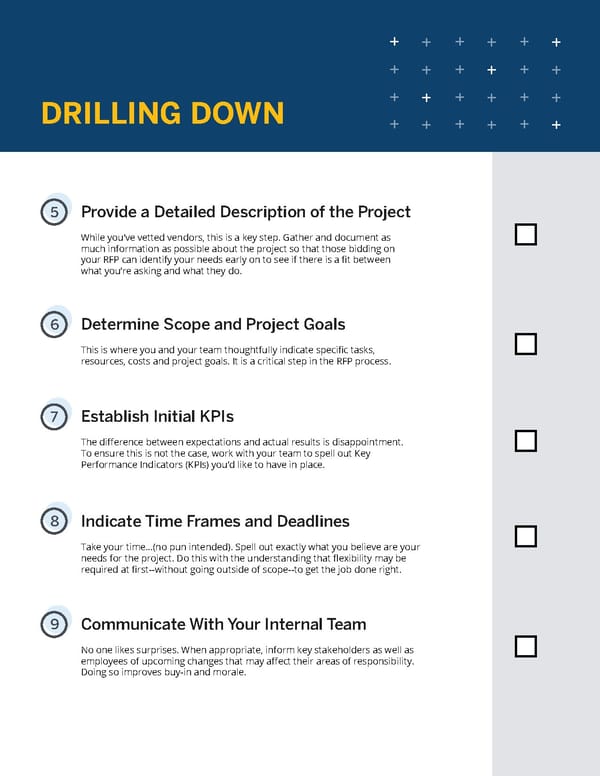5 Provide a Detailed Description of the Project While you’ve vetted vendors, this is a key step. Gather and document as much information as possible about the project so that those bidding on your RFP can identify your needs early on to see if there is a fit between what you’re asking and what they do. 6 Determine Scope and Project Goals This is where you and your team thoughtfully indicate specific tasks, resources, costs and project goals. It is a critical step in the RFP process. 7 Establish Initial KPIs The difference between expectations and actual results is disappointment. To ensure this is not the case, work with your team to spell out Key Performance Indicators (KPIs) you’d like to have in place. 8 Indicate Time Frames and Deadlines Take your time...(no pun intended). Spell out exactly what you believe are your needs for the project. Do this with the understanding that flexibility may be required at first--without going outside of scope--to get the job done right. DRILLING DOWN 9 Communicate With Your Internal Team No one likes surprises. When appropriate, inform key stakeholders as well as employees of upcoming changes that may affect their areas of responsibility. Doing so improves buy-in and morale.
 The 10 Step RFP Checklist Page 2 Page 4
The 10 Step RFP Checklist Page 2 Page 4